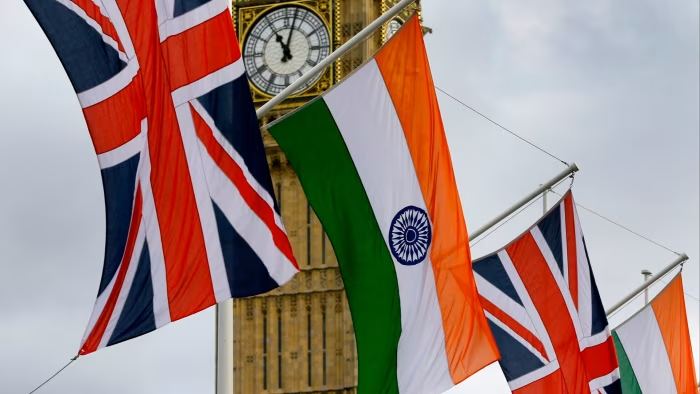Introduction
After nearly three years of complex negotiations, the United Kingdom and India have officially agreed to a landmark trade deal in 2025. This free trade agreement (FTA) marks a significant turning point in bilateral economic relations and reflects both nations’ strategic priorities in a post-Brexit and post-pandemic global economy. In this blog, we break down the top five benefits of the UK-India trade deal and what it means for businesses, consumers, and future cooperation.

1. Major Tariff Reductions Across Key Sectors
The deal includes substantial tariff cuts on over 10,000 products, including textiles, cars, spirits, and pharmaceuticals. UK whisky exports to India will see a phased reduction of up to 150%, while Indian textile products will gain easier access to UK markets. This is expected to benefit small and medium enterprises (SMEs) and drive down consumer costs.
2. Services and Tech Sector Get a Boost
The agreement eases regulations around cross-border services, especially in the tech, legal, and financial sectors. Indian IT firms will benefit from simplified visa processes for skilled workers, while UK legal firms will find it easier to operate in India’s rapidly modernizing financial markets.
3. Strategic Move in Post-Brexit Trade Expansion
For the UK, this deal is part of its broader post-Brexit strategy to diversify trade beyond the EU. India represents a fast-growing market with a young population and increasing digital adoption. With this agreement, the UK strengthens its position in the Indo-Pacific—a key region in global geopolitics and trade.
4. Environmental and Labor Standards Included
Both sides agreed on sustainable trade clauses. These include commitments to uphold environmental protections and labor rights—especially important given criticisms of past trade agreements lacking in ethical oversight. This adds a new layer of accountability and positions the deal as progressive and future-facing.
5. Political Win for Both Governments
UK Prime Minister Rishi Sunak and Indian Prime Minister Narendra Modi are touting the deal as a diplomatic triumph. For Sunak, the agreement delivers a major international win ahead of potential elections. For Modi, it aligns with his Make in India and economic self-reliance initiatives, reinforcing India’s status as a global trade player.
Conclusion
The UK-India free trade agreement marks a turning point in both countries’ economic strategies. With lowered tariffs, better market access, and shared commitments on sustainability, the deal sets a precedent for future bilateral trade relationships. It’s not just a business opportunity—it’s a signal of shifting global alliances in the post-COVID, post-Brexit world.
Want to understand more about how the UK is reshaping its trade priorities? Check out our article on Post-Brexit Trade Strategy Explained.
Stay tuned for updates on implementation timelines, sector-specific benefits, and expert analysis.